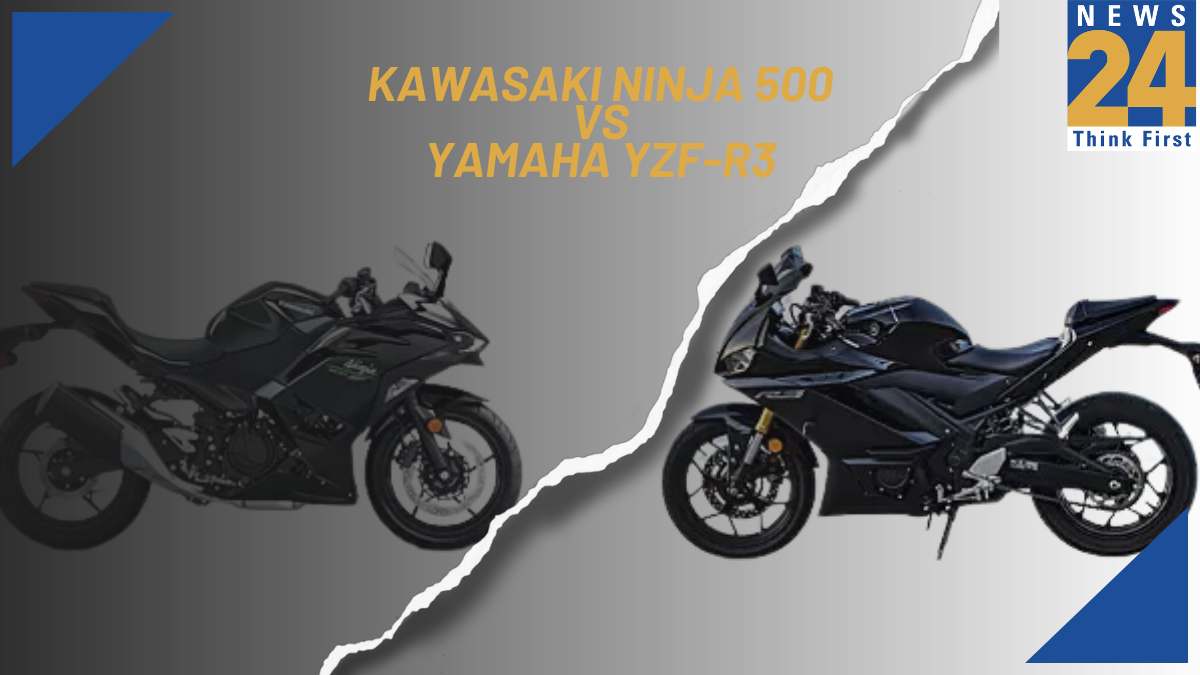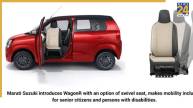Kawasaki Ninja 500 vs Yamaha YZF-R3: Kawasaki recently launched the new sports bike – Ninja 500 – in India at an introductory price of Rs 5.24 lakh (ex-showroom). The Kawasaki Ninja 500 is expected to eventually replace the Ninja 400, which is priced the same as the new motorcycle. The Ninja 500 is more expensive than its main rivals – the Aprilia RS 457, which costs Rs 4.10 lakh, and the Yamaha YZF-R3, priced at Rs 4.65 lakh. Here is a detailed comparison between the Kawasaki Ninja 500 and the updated Yamaha YZF-R3 to help you choose the best one:
Engine Showdown: Kawasaki Ninja 500 vs Yamaha YZF-R3
The Kawasaki Ninja 500 borrows its engine from the recently launched Eliminator 500. So, there is a new 451cc liquid-cooled, parallel-twin engine that churns out an identical 45 bhp at 9,000 rpm. It produces a peak torque of 42.6 Nm at 6,000 rpm, which is 5.6 Nm higher than that of the Ninja 400.
On the other hand, the new generation Yamaha YZF-R3 inherits the mechanical DNA of its predecessor while getting updated to meet BS6 Stage II emission norms. The R3 uses the same liquid-cooled 321cc, parallel-twin engine capable of delivering 42 bhp at 10,750 rpm and a peak torque of 29.5 Nm at 9,000 rpm. Both motorcycles are paired with a six-speed gearbox backed by a slip-and-assist clutch for a smooth riding experience.
Chassis & Braking: Unveiling the underpinnings
The Kawasaki Ninja 500 gets a steel trellis frame. The Ninja 500’s suspension is based on a telescopic fork at the front (120 mm of wheel travel) and a preload-adjustable monoshock at the rear (130 mm of wheel travel).
The Yamaha YZF-R3, on the other hand, comes with a lightweight diamond-type frame. The suspension setup is also different. The R3 features an upside-down front fork (130mm) and rear mono-shock (125mm) combination.
Both the Ninja and R3 are equipped with disc brakes at both the front and rear wheels. However, the Kawasaki Ninja 500 boasts a bigger 310mm front brake compared to the Yamaha YZF-R3’s smaller 298mm disc. Despite the difference up front, both motorcycles share the same 220mm rear disc brake and 17-inch wheels at each end.
Dimensions & Ergonomics: Size, weight, and comfort
At 171 kilograms, the Kawasaki Ninja 500 weighs slightly more than the YZF-R3 (169 kilograms). The Ninja’s seat height is 785 mm and can be increased by 30 mm to 815 mm. On the other hand, the seat height of the Yamaha R3 is 780 mm. The ground clearance of the R3 is 160 mm. The Ninja 500 has a ground clearance of 145 mm.
Head-to-Head: Aesthetic showdown
In terms of design, the Kawasaki Ninja 500 draws cues from its siblings, the ZX-6R and the Ninja 7 Hybrid. At the front, there are sleek, twin LED headlights and a layered fairing. A small windshield and clip-on handlebars complete the sporty look. A split-type seating layout provides comfort. Other features include LED taillights and an upswept rear section.
While the Ninja 500 Challenger boasts a modern and sporty look, the R3’s design is about three years old. It features a sporty fairing, clip-on handlebars, sharper LED headlights, a curved fuel tank, a raked tail section, a compact LED taillight, and split-style seats.
Feature Face-Off: Gauges, lights, and connectivity
Both the Kawasaki Ninja 500 and the Yamaha YZF-R3 come with all-LED lighting and LCD instrumentation. However, the Ninja gets an edge over the R3 as it offers an instrument cluster with Bluetooth connectivity. Also, Kawasaki’s negative LCD looks more premium and modern compared to Yamaha’s simple LCD.
Price Points: Battle of the wallets
Although both motorcycles are CBU imports, the Yamaha is more affordable than the Kawasaki. While the Yamaha R3 is priced at Rs 4,64 lakh (ex-showroom), the Kawasaki Ninja 500 costs Rs 5.24 lakh (ex-showroom).
Kawasaki Ninja 500 vs Yamaha YZF-R3: The Verdict
Choosing between the Kawasaki Ninja 500 and the Yamaha YZF-R3 depends on individual preferences and priorities. Here are the key differences to help you make an informed decision:
Engine: The Ninja 500 has a larger engine offering slightly more power and torque compared to the R3.
Features: The Ninja 500 comes with Bluetooth connectivity for its instrument cluster. On the other hand, the R3 offers a simpler LCD display.
Price: The Yamaha YZF-R3 is the more affordable option compared to the Kawasaki Ninja 500.
Ultimately, consider your budget, riding style, and desired features when making your choice. If you prefer a larger engine and the latest features, the Ninja 500 might be a good choice. If you want to go for a more affordable option and a proven track record, the YZF-R3 could be a better choice.
Also Read: Best Mileage Bikes In 2024: Hero Splendor Plus XTEC To TVS Sport













